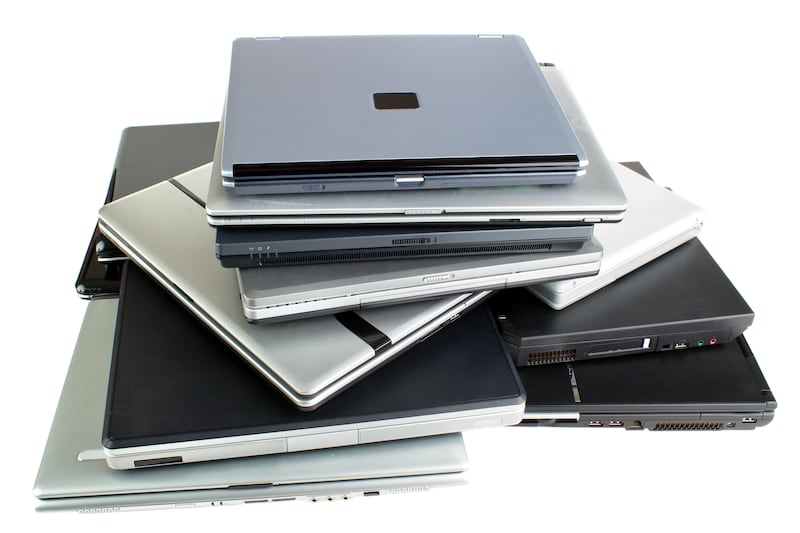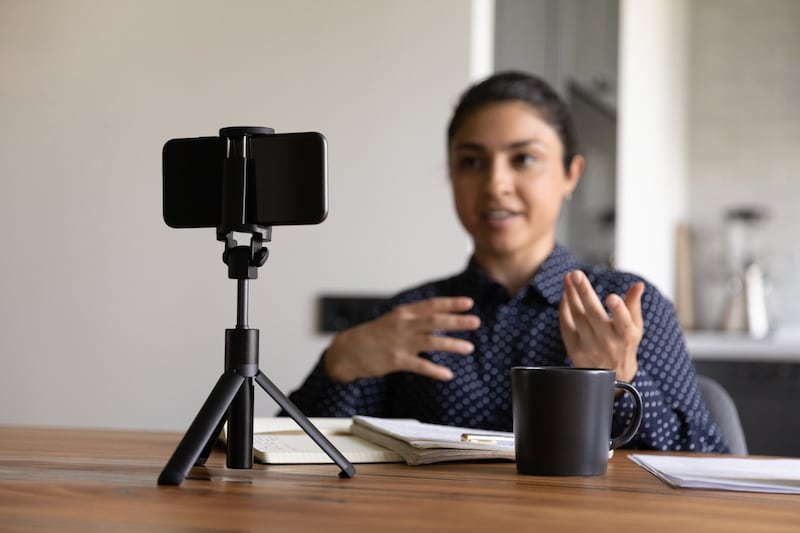Technology isn’t cheap, both in terms of the impact on our wallets and the lasting effect generating so much electronic waste can have on the planet.
So the longer we can eke out of our devices, the better all round.
That could mean a cheaper fix – replacing a battery, repairing a charging port, for example – or upgrading certain components, such as RAM inside a laptop or desktop computer.
But what happens when the devices are no longer fit for daily use? There are some things you can do to keep your tech working long after it has passed its original sell-by date.
LAPTOPS

Unlike smartphones, you are unlikely to be upgrading your laptop after two or three years. Although the average replacement cycle for laptops is officially three years, most people will extend that significantly until the laptop becomes so slow it is unusable or the software is no longer supported. The latter means no more security updates, and not something that people want to risk, especially when laptops can contain confidential information that we want to keep private.
For most people laptops are a significant investment, often costing more than €1,000 in a single hit – not something you want to be paying on a regular basis. So the more you can get out of your laptop, the better.
But there are ways to give your old notebooks a new lease of life even after their original software is no longer supported.
Turn it into a Chromebook
If you have an old laptop hanging around that can no longer be upgraded to the latest version of Windows or Mac OS, you could flip it to a makeshift Chromebook. Although Google-powered computers aren’t everyone’s cup of tea, its ChromeOS is fine for light tasks such as word processing, web browsing and social media. They also have the added advantage of regular security updates, which happen automatically and in the background.
The version you can install on non-native Chromebooks is slightly different. ChromeOS Flex doesn’t have the same security guarantees as ChromeOS, nor will it run Android apps, but it is light, nimble and can use Windows’ Secureboot, if the machine supports that.
The good news is that your old Windows laptop is probably capable of running Chrome – check the list of certified models – but just because your device isn’t certified, doesn’t mean you won’t be able to install it; it just might not work quite as planned.
Before you install ChhromeOS Flex on your laptop, check the list of requirements. You will need at least 4GB of RAM on your machine, and 16GB of internal storage, and be an Intel or AMD x86-64-bit system.
You should also back up your files on your old laptop. Installing the new operating system will wipe your data, so anything you need should be transferred to cloud storage or backed up to portable drives.
Try Linux

Linux is an open-source platform that has long been a favourite of techies and tinkerers. But it can also be installed on your ageing Windows machine, either as a replacement for your operating system or alongside it.
There are several different flavours of Linux, so you can pick one that suits your needs best. Karlin Lillington wrote about installing Linux on an old Microsoft Surface device in The Irish Times last week, opting for Zorin.
Either way, you’ll need to back up all your files before you get started, and then create a bookable Linux USB drive to install the operating system. There is help out there if you aren’t confident about your abilities, with the Dublin Linux Community holding regular meetups.
SMARTPHONES
We all have smartphones gathering dust in drawers – not good enough to use or sell on but too good to send for recycling. Aside from turning them into a games device for a younger family member, or an emergency backup phone for when disaster strikes, how can our old smartphones be better used?
Turn it into a security camera
Smartphone cameras have increased their quality significantly in the past few years. Gone are the badly lit images, bad-quality videos, and in their place is footage that could rival a stand-alone camera – still or video.
But with a cheap stand – and access to power – you can use your old, unloved smartphone as a security camera for your home for the princely sum of zero euro. The apps are free for basic features, with subscriptions kicking in only if you want additional services such as extra cameras, HD footage and cloud recording.
Alfred Camera is one option. Not only does it offer great features – live footage, motion detection – but it also works across platforms, so you can mix and match Android and IOS, and even old laptop webcams. You’ll need a new smartphone on which to install the Alfred app, and download the software on to your older phones, linking them to your Alfred account via QR code.
Other apps with free camera abilities are Manything and Presence.
Replace your laptop’s tired webcam

Pre-pandemic, the quality of your laptop’s camera probably didn’t cross your mind. But with Zoom meetings and Teams calls a permanent part of most people’s working life, the poor quality of many webcams has become an issue. Grainy, blurry, muddy: this is not what you want on your video calls.
But your old smartphone could give your laptop a new lease of life with a few apps and some free software.
Install Droidcam on your smartphone and the desktop client on your laptop, and you can use your old Apple or Android smartphone as a replacement webcam. It will work with third-party video conferencing software such as Zoom or Google Meet. You simply choose Droidcam as the camera source, and you are good to go.
As an added bonus, because it is not limited by the angle of your laptop, you can avoid the dreaded “under chin” shot that so many webcams give us.
Install a new OS
If you have some technical skills and a bit of patience, you could refresh your old tech by installing a new operating system on your device – assuming you have an Android phone.
Android is open-source software, which means there are a number of different versions available online, known as custom ROMs, that you can download and install on your phone. Not only does it give your phone new life, it can also strip out some of the bloatware that phone manufacturers are so fond of installing on Android phones.
To get started, you will need access to a laptop to install the software on the smartphone, and a high-quality USB cable for your device.
This one definitely requires more technical expertise than the other options, so if you aren’t comfortable with bootloaders and “flashing” phones, it might be best to skip this one.
There are some other things you should check before you go down that road. First, make sure your device is compatible with the new version of the software – the stable release of GrapheneOS for example, is designed to only run on certain Pixel phones. Also, the changes you need to make to your system to allow new software to be installed can also be a security risk, leaving your system potentially open to other intrusions if someone has physical access to your device.
Installing a custom ROM could trigger some security procedures that lock out certain features, such as Google Pay.
Also make sure you follow the steps closely or you could damage your smartphone.
TABLETS
Turn it into a home hub
Smart home systems can be useful, but not if the controls are marooned on one smartphone that regularly leaves the house. One solution? Turn your old Apple or Android tablet into a hub. That is a device that can stay at home, and can be used to control all your smart devices and home controls without needing your smartphone, regardless of whether your devices are controlled by Alexa, Google Home, Apple Homekit, Homely or other smarthome app. The larger screen is also ideal for security cameras or video doorbell footage.
Install your smart home app of choice, plug it in and prop it up on a stand somewhere handy to grab when it is needed.
Turn it into a digital photo frame
So many family memories are stuck on our phones or in cloud storage. But you can free them by using an old tablet as a digital photo frame.
Apple’s photo app automatically creates slide shows of your best memories, and you can create your own slide shows from albums to run on the device. Google photos has a similar feature, with automatically generated slide shows mixed in with your own. You just need to trigger the slide shows and let them run. On Apple, you can do it by opening the required album and tapping on the three dots in the top right corner, and tapping Slideshow. On Google, it can be found in the first photo of the album, under the three dots on the top right side of the image.
- Sign up for Business push alerts and have the best news, analysis and comment delivered directly to your phone
- Find The Irish Times on WhatsApp and stay up to date
- Our Inside Business podcast is published weekly – Find the latest episode here





















